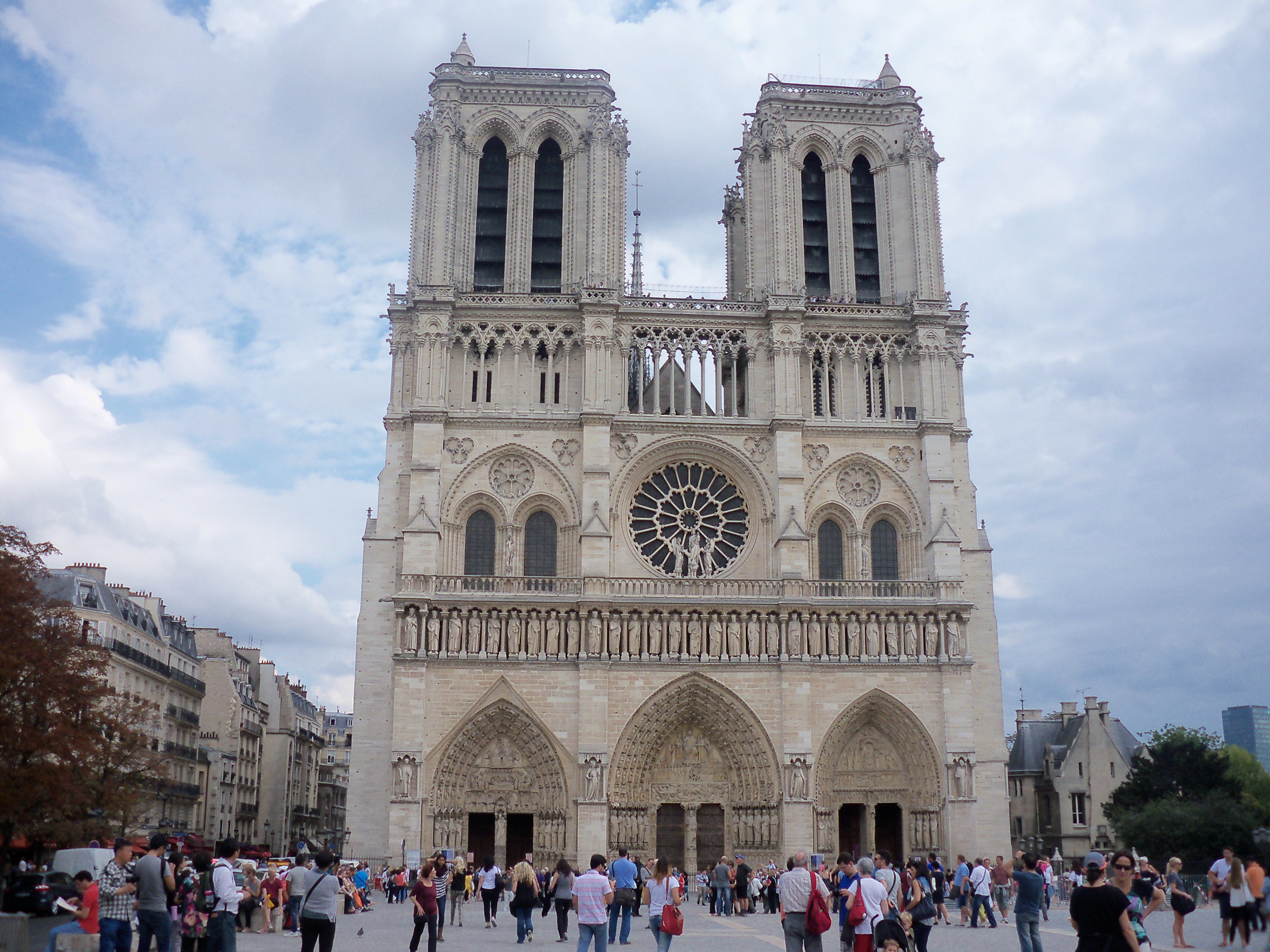Notre Dame fire

|
| Notre Dame seen here before the fire. |
On Monday 15 April 2019, at around 7pm, fire ripped through the iconic Notre Dame cathedral in Paris. By 9am the following day, the centuries-old masterpiece of French Gothic architecture had suffered catastrophic damage to its roof and some of its contents, while the 90m-high oak and lead spire over the crossing had collapsed completely – to the horror of stunned onlookers.
A building that had taken nearly 200 years to build had suffered almost irreparable damage in just a matter of hours. Fortunately, the Paris authorities were later to confirm that the structure itself had not been irreversibly damaged.
Thanks in part to the action of the 90 firefighters, the fire did not reach the towers on the front elevation, and generally the building’s walls remain structurally sound. But the timber roof has been completely destroyed, as have some of the religious artefacts. However, a full damage assessment had yet to be undertaken at the time of writing.
Within hours of the fire taking hold, president Macron vowed that the cathedral would be rebuilt within five years (although this timetable has been criticised as being political rather than practical). French businessmen were also quick to pledge more than €300m to a rebuilding fund. Anne Hidalgo, the mayor of Paris, also promised that city funds would go toward the rebuilding project, while the Ile-de-France regional government said it would donate a further €10m. An international fund-raising drive is expected to further boost the monies available.
The fire’s origin is as yet uncertain but is thought to be the result of ongoing renovation works. It is clear however, that the fire probably started in the roof space above the stone vaults of the interior, as it would have taken a long time to spread to the roof, and would likely have been noticed sooner, had it have started on the ground.
See also: Notre Dame, a conservation perspective.
[edit] Notre Dame – a brief history
Building work on the cathedral began in 1163 during the reign of Louis VII but it was not until 1345 that construction was completed. Since then, the cathedral has seen numerous high-profile ceremonies, such as crowning Henry VI king of France, Napoleon Bonaparte’s coronation in 1804, and the beatification of Joan of Arc in 1919.
Perhaps more famously, the cathedral was the setting for Victor Hugo’s 1831 novel, ‘The Hunchback of Notre Dame’.
This story will be updated as events unfold.
[edit] Related articles on Designing Buildings Wiki
IHBC NewsBlog
Images from inside a Grade II listed hotel show the scale of its collapse
The Corbett Arms in Tywyn has fallen into serious disrepair.
Old Sarum fire in listed (& disputed) WW1 Hangar - Wiltshire Council has sought legal advice after fire engulfed a listed First World War hangar that was embroiled in a lengthy planning dispute.
UK Antarctic Heritage Trust launches ‘Virtual Visit’ website area
The Trust calls on people to 'Immerse yourself in our heritage – Making Antarctica Accessible'
Southend Council pledge to force Kursaal owners to maintain building
The Council has pledged to use ‘every tool in the toolbox’ if urgent repairs are not carried out.
HE’s Research Magazine publishes a major study of the heritage of England’s suburbs
The article traces the long evolution of an internal programme to research 200 years of suburban growth
IHBC Context 183 Wellbeing and Heritage published
The issue explores issues at the intersection of heritage and wellbeing.
SAVE celebrates 50 years of campaigning 1975-2025
SAVE Britain’s Heritage has announced events across the country to celebrate bringing new life to remarkable buildings.
IHBC Annual School 2025 - Shrewsbury 12-14 June
Themed Heritage in Context – Value: Plan: Change, join in-person or online.
200th Anniversary Celebration of the Modern Railway Planned
The Stockton & Darlington Railway opened on September 27, 1825.
Competence Framework Launched for Sustainability in the Built Environment
The Construction Industry Council (CIC) and the Edge have jointly published the framework.













